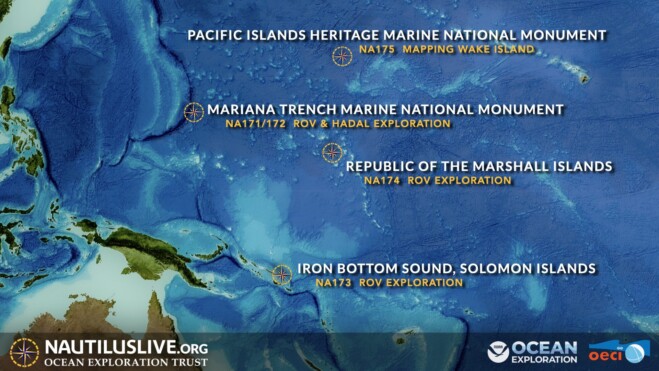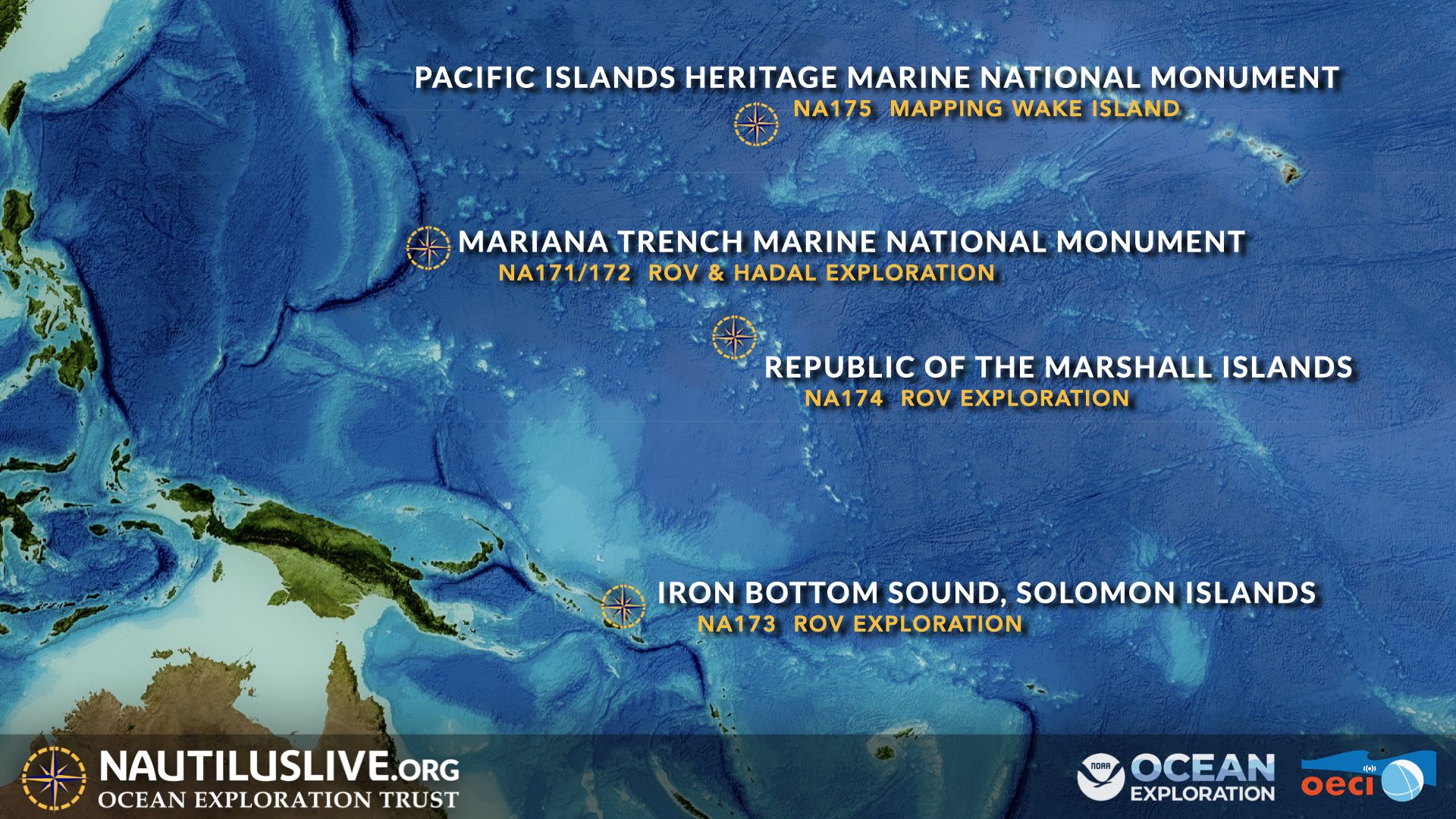

The Ocean Exploration Trust (OET)’s exploration vessel (E/V) Nautilus is underway on its third expedition of 2025 to conduct archaeological surveys of historically significant shipwrecks in the Iron Bottom Sound: the site of five famous naval battles, which were a turning point in the WWII Pacific theater. Led by OET President and explorer Dr. Robert Ballard, the 21-day expedition will utilize OET’s remotely operated vehicles (ROVs) in combination with the mapping capabilities of the University of New Hampshire’s uncrewed surface vessel (USV) DriX. This coordinated technology approach aboard E/V Nautilus demonstrates new efficiencies in archaeological ocean exploration supported by NOAA Ocean Exploration via the Ocean Exploration Cooperative Institute.
Located in the Solomon Islands, Iron Bottom Sound was the stage of five major naval battles between August and December 1942, which resulted in the loss of over 20,000 lives, 111 naval vessels, and 1,450 planes from the Allied forces and the Empire of Japan. These underwater maritime heritage sites now rest on the seafloor in a confined area offshore Honiara, less than 25 nautical miles wide and 40 nautical miles long. To date, only 30 of the military ships lost in this area have been located, with at least 21 remaining to be found within the deep waters of Iron Bottom Sound.